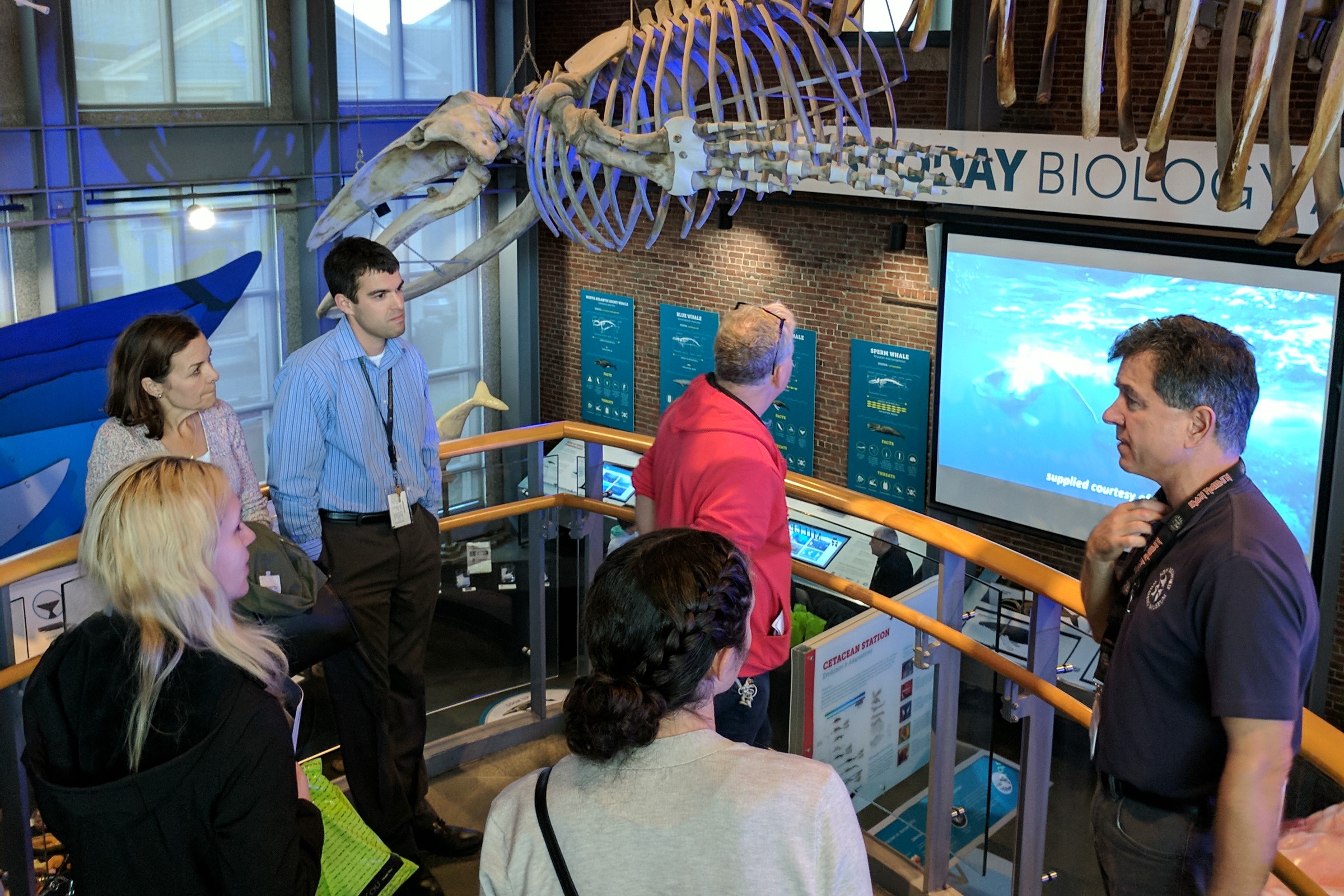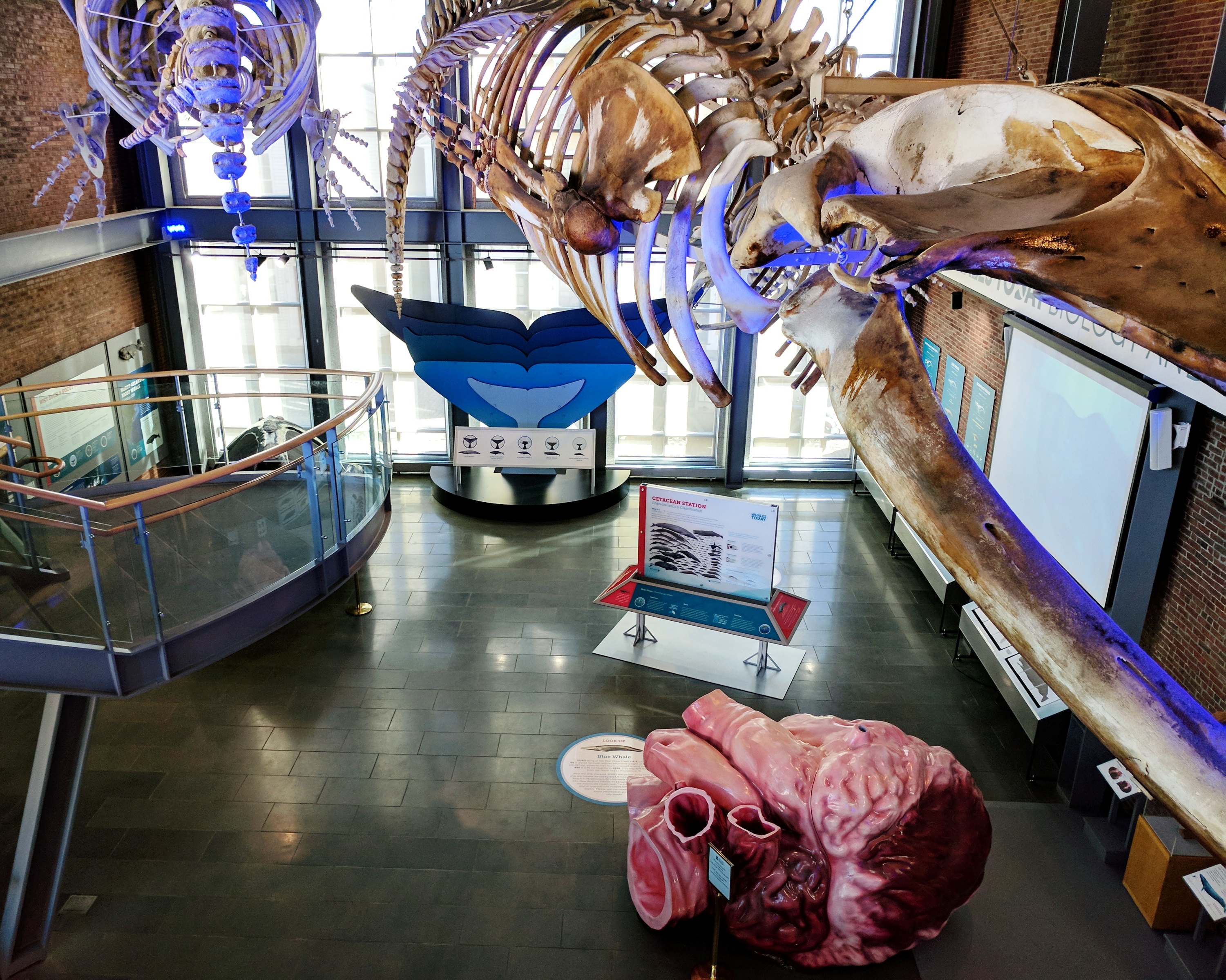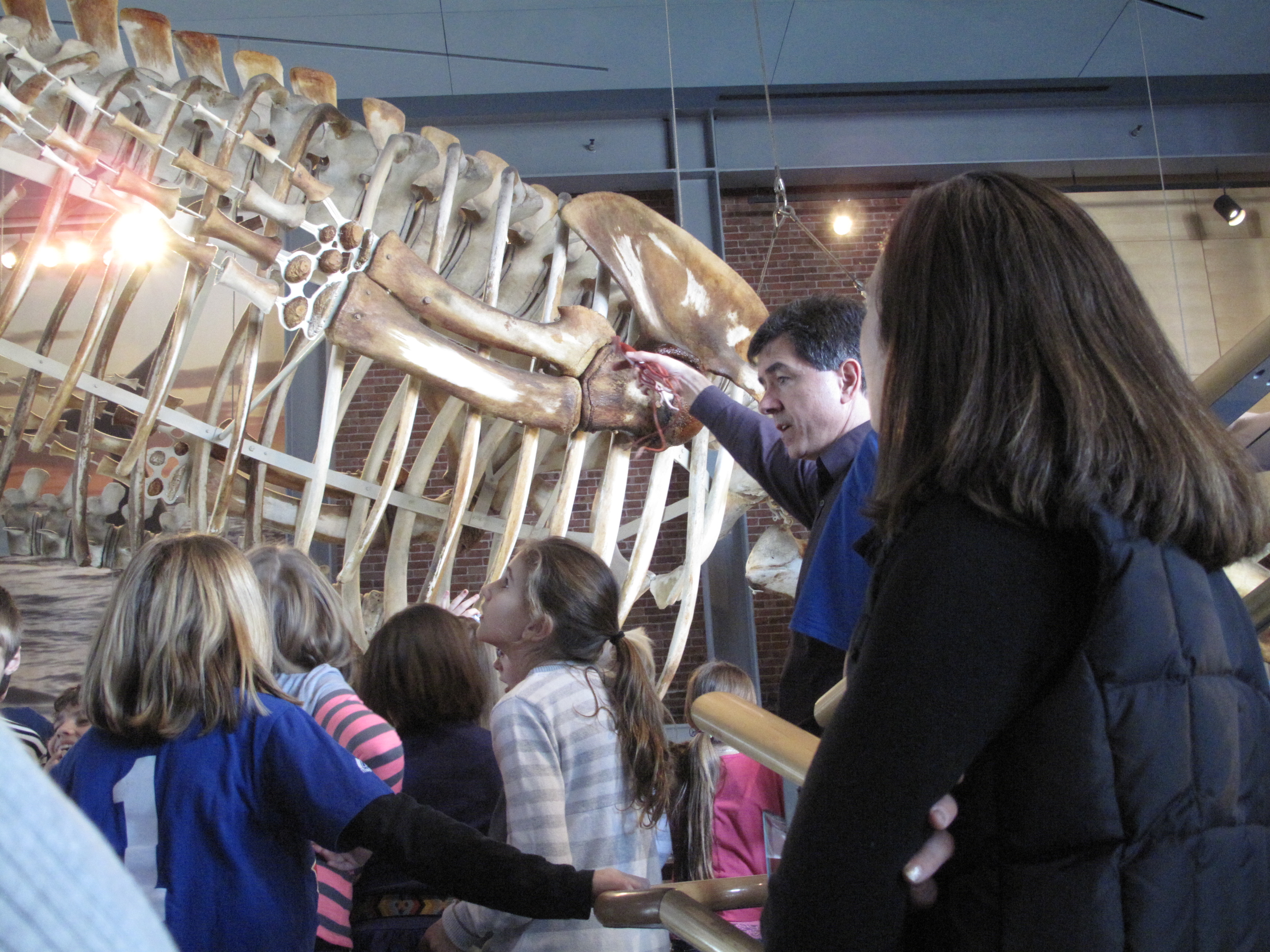The New Bedford Whaling Museum
This article is part of the blog series ‘Meet the members’ in which you’ll get to know the EMSEA members, what drives them and what inspires them. They’ll share their experience, their good practices, their challenges. They’ll talk about what ocean literacy means to them and how they hope to reach it. Today we meet Robert Rocha, Associate Curator of Science and Research at the New Bedford Whaling Museum in Massachusetts, USA.
He spent his youth at sea, living in a house just across from his grandparents, a few meters away from a rocky shoreline at the Atlantic coast. Together with his sisters, he spent hours either in the water or at the beach, turning rocks to see what was underneath. Getting a snorkel mask was ‘the coolest thing ever’. Today, he’s Associate Curator of Science and Research at the New Bedford Whaling Museum (NBWM), a place he has been working at for the last 19 years. His name is Robert Rocha and he breaths ocean.
Ocean literacy? Why?
The oceans support so much of our lives and what we do on a daily basis. They provide oxygen, food, business opportunities, recreation and drive the planet’s chemistry. While the oceans will survive us all, we simply couldn’t live without them. No wonder Rocha made his career out of it. But he also takes ocean literacy to a more ethical level. ‘It’s about taking care of what you have’, he says. ‘If you don’t make a mess, you don’t have to clean it up. Also, ocean literacy is just fun. There are so many cool things going on in our oceans and in the sand’, Rocha smiles. That excitement is exactly what he tries to bring to the public every day.
Bringing awe and fascination
As a curator, he’s constantly contemplating how to bring New Bedford’s history to the public. Since whaling is an important part of that history, it takes up a large part of the museum. One of the most engaging objects in their collection is a fully functioning, half-scale model of a 200-year-old whaling ship. A bit further, hanging from the ceiling, the NBWM has a 15-metres long North Atlantic Right Whale skeleton at display, with a foetal skeleton inside. The display of mother and child is one of kind and definitely sparks conversation among the visitors.
‘With our displays we try to answer the many questions our visitors have’, says Rocha. ‘Are whales still being hunted? How many are left? What are their threats? How long do they live? We take these questions as a starting point and from there, we move on to tell the stories about questions they don’t even know to ask.’

The visual aspect is an important one in this. ‘Reading about something is great, but doing things is better. And science is something you do,’ says Rocha. Therefore, they often bring baleen plates or sperm whale teeth to their lectures. Being able to hold these objects in their hands, truly engages the public, whether they’re children or adults.
Adding context is another important factor in bringing these stories. Many people are rightly appalled by the contemporary, mechanised whaling business. ‘Coming to the Whaling Museum, people wonder why we killed all these whales. Adding context is important here. First, there is a huge difference between modern mechanised whaling and historical whaling under sail. Second, the whaling industry provided work for many people and often a safe place for runaway slaves. Third, there is a strong cultural connection. A large population in New Bedford has ancestry in the Azores Islands, Madeira and Cape Verde, due to the interaction with the whaling ships. I, myself, have roots on the island of São Miguel.’ Bringing that context, gives people the opportunity to view a situation from multiple perspectives, an important skill in environmental science today.

Different ways of outreach
The NBWM not only engages with their public through museum visits and lectures. They apply other means as well.
At the moment, they have a mobile display about Seals and Society traveling around. This on-the-road exhibition provides information on harbour and grey seals. It even encompasses a resource kit full of artefacts like skulls and activities like games and puzzles, to help the audience understand these animals and help guide the more frequent interactions between humans and seals.
The NBWM also has a lot of experience in education and science programmes for schools. One of their most successful programmes was for the 4th grade (age 9-10), called ‘Whales, Giants of the Ocean’. With this programme, they educated teachers, provided them with a resource kit and lesson plans to use in the classroom and brought the children in for an interactive museum visit. Both teachers and students were quite enthusiast about the project.
Also, with COVID, there was a rise in online representation, a trend that is still very much alive at the NBWM. Teachers can now easily find online resources such as videos, demonstrations and PDF’s to help them with their ocean-related lessons in class.
Next to the interaction with visitors, Rocha emphasises the importance of networking and taking part in conferences, to share knowledge with other professionals and learn from them as well. ‘You meet some amazing and inspiring people on these events. They may be the start of something beautiful, just like when EMSEA was born at the 2011 NMEA conference in Boston.’
Challenges
Of course, it’s not all fun and games. Bringing ocean awareness can bring some challenges as well. ‘This might sound so trivial,’ says Rocha, ‘but practical things, such as the rising cost of school buses, can be a real issue.’ Especially if you want to engage underprivileged children, this might be a tough barrier. ‘Even though some of these kids live near the coastline, some never come to the shore because they simply lack the means to do so,’ testifies Rocha.

Another challenge we’re facing today, is the fast rise of misinformation. ‘Recently we had some political opportunists claiming wind turbines were to blame for whale deaths, while that was not based on any scientific evidence whatsoever’, Rocha complains. It’s a trend that scientists are fighting all over the world nowadays. It makes ocean literacy organisations all the more important.
On the other hand, awareness is rising as well, Rocha believes. He finds there is more political will to pay attention to environmental issues such as climate change. And, even though the internet may lead to a rise in misinformation, the online availability of many resources also has opened up access to scientific knowledge for a much bigger audience.
We still have a long way to go, though. Rocha dreams of an ocean that is free of ghost nets, fishing gear and other plastic debris. Of a rise in renewables and a decrease in oil spills. Of a world that makes space for nature in general and the ocean specifically.
He’s working hard to get there, one museum visit at a time.
Top tips for Ocean Literacy organisations by Robert Rocha
- ‘Bring visually interesting stuff, and maybe throw in things that are gross or icky. Those will create a memory. For example, I love talking about how we cleaned our Right Whale skeleton in big piles of horse and elephant poop. Trust me, they’ll remember.‘
- ‘Meet people where they are. Focus on topics, regions and locations they can connect to. Bring objects and artefacts related to their lives. Start with what they already know.’
Text by Anke de Sagher for EMSEA
Photos by Robert Rocha & NBWM
Want to join the community? Find out how to become an EMSEA member!
More on the New Bedford Whaling Museum
- Website: www.whalingmuseum.org
- Instagram: www.instagram.com/whalingmuseum
- Facebook: www.facebook.com/whalingmuseum
- Youtube: www.youtube.com/user/WhalingMuseum
- LinkedIn:


